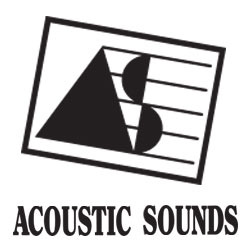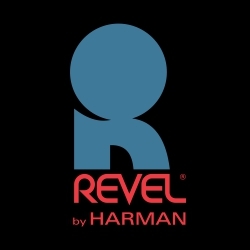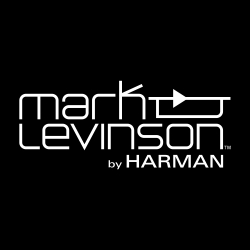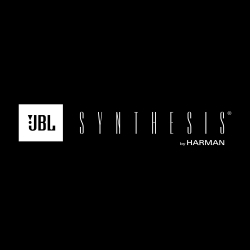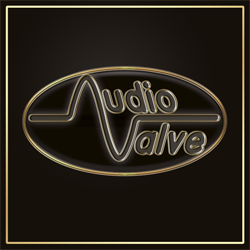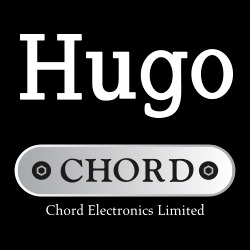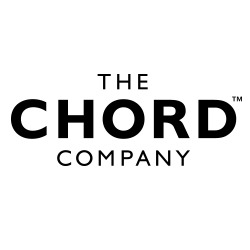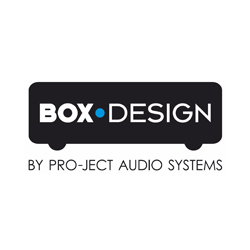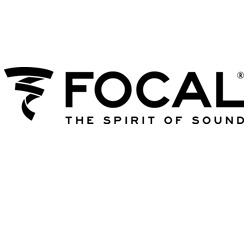Cliché or not, every journalist will tell you that he or she is bombarded with requests to answer one question: ‘What is the best?’ Doesn’t matter what the subject, from notebook computers to fishing rods to sat-nav systems to model railway controllers. Anyone paid by some journal or web site or TV programme for his or her opinion will be asked for on-the-spot consultation. And only ‘the best’ will do.
Why such brazenness when only the truly shameless would dare to ask a doctor/lawyer/plumber for free advice? Human nature is the reason: I suppose that, in a way, journalists are considered public property, and therefore fair game. You don’t expect an invoice from a journalist, whereas a lawyer charges by the second. Additionally, no journalist wants to seem an arrogant prat by refusing to answer.
Even more subtle a reason for asking reviewers face-to-face ‘what’s best’ is that readers always assume correctly that what’s published in a magazine is, by its very nature, general. No reviewer can come up with the ideal speaker for every reader’s amp or room, and no reviewer can try every product in every possible combination. (Equally, readers often assume incorrectly that opinions – at least in the UK press – are somehow censored. They’re not.)
What it gets down to is this: those asking the question want to know specifically what’s the best for them. But that’s rarely how the question is phrased. So they get angry when a reviewer tells them that, for example, the best amp in the world – in his opinion – is Model XXX, which costs £27,000. As they can only afford £650, they stomp off muttering things like ‘conceited asshole’.
Conversely, there are car enthusiasts and watch crazies and audiophiles and wine lovers who, simply to satisfy their intellectual curiosity, genuinely want to know the answer to that unanswerable question. Best car? Well, one would never suggest that a Range Rover cancels out a Ferrari, or that a Mini Copper S negates the raison d’etre of the Mercedes S Class, so there is no overall best car. Cameras? A Leica won’t do what a Widelux will, and vice versa. So, too, with hi-fi: you don’t compare a 3W single-ended triode with a solid-state 600W Class A monoblock.
Audiophiles are as bad as anyone for refusing to take ‘no’ for an answer, so I’m getting this off my chest after two-decades-plus of fielding the ‘what’s best?’ question. I’ll tell you what I think is the best, with the following provisos: My taste invariably differs from yours, as does my preferred sonic balance: midrange authenticity above everything else, because I mainly listen to vocals. That’s followed by convincing soundstage and an absence of fatigue-inducing coloration. And way down the scale is bass quantity. Please keep that in mind as you read on.
But it’s never that easy, and I won’t be trapped, so I’m breaking it down into systems, with a few exceptions. You simply cannot use the same scale of ‘bestness’ for small speakers as you would large, especially when the latter won’t fit into certain rooms. The best pre-amp for CD ain’t necessarily what you’d use for vinyl. And I refuse to stage transistors against tubes because you love one or the other, or you’re open-minded and employ both without concern for the stuff inside. Whatever stance you take, be it CD vs vinyl or tubes vs transistors, it’s like comparing red wine with white.
Other considerations? Everything on these pages is in current production, two-channel and available in the UK. And I’ve heard them. Which also means that everything which I haven’t heard isn’t in the running! Talk about undermining the story before it’s even started.
So here goes, with all those provisos in mind:
BEST COMPACT SYSTEM IF YOU HAVE A SMALL ROOM AND A SMALL BUDGET:
Arcam Solo and a pair of PMC DB 1+ speakers
Arcam has delivered a brilliant one-box solution for the iPod era, and the PMCs sound great even with mediocre amplification. Price, even with a bunch of accessories, will be under £2k. This is a budget system for which you need never apologise: musical, coherent, detailed. No, it won’t provide the dynamics that only come with size and power, but compromise is the rule when the budget is finite. (By the way, if you’re wondering what I’d suggest for under £1000, you’re out of luck. Time to grow up. When 11-year-olds have £200 Playstations and a few dozen games and their own TVs and mobile phones and computers, £2000 for grown-ups is nothing short of realists. This is 2006, not 1978. If you disagree, then you should be reading The Big Issue or The Guardian.)
BEST COMPACT SYSTEM IF YOU HAVE A SMALL ROOM AND A BIGGER BUDGET:
Quad CDP99 Mk II, Quad 909, Stirling LS3/5As
We’re talking around three grand, but wow! What a system! And the Quad CDP includes a pre-amp – genius! If, like some harried audiophiles with miserable wives, you have a small-ish room, this will deliver the magic in a space as compact as 12x10ft. I resisted using vintage LS3/5As because of the proviso that everything here is in production, but the Stirlings are simply the most accurate replica for which an LS3/5A-ophile could have begged. Smooth and silky sound, and mid-band to die for – as you’d expect of an LS3/5A. And if you do need more bass, REL’s latest subwoofers are so comprehensively adjustable that you can use them with the Stirlings without compromising their purity.
BEST COMPACT SYSTEM IF YOU HAVE A SMALL ROOM AND AN EVEN BIGGER BUDGET:
Quad CDP 99 MK II, Audio Research VS100, Wilson Duettes
This is obviously an upgrade path: stick with the Quad CD/pre-amp, but change the Stirlings for Wilson Duettes, and the power amp for an Audio Research VS100. Sweeter sound, more detail, and an added bonus: the Duettes were designed to be use in two operating modes. Away from the wall on stands, or right up against it, on shelves. This makes it a natural for a high-end package in a room where the free-standing option just ain’t gonna happen. The crossover is external, and Wilson supplies two different sets of cables and resistors clearly marked for either application. They’re so good against the wall, that it’s almost a hi-fi party trick, defying reason. But out in free space – wow! They’re like a budget version of WATT Puppys.
BEST COMPACT SYSTEM FOR UNRECONSTRUCTED AUDIOPHILES
Musical Fidelity X-RAY V3, Prima Luna Prologue 2, Tannoy Autograph Mini
My X-RAY gets more use than any CD player in my arsenal because it’s on my desk. The Prima Luna re-wrote the rules by being one of the first entry-level made-in-China valve amps with European build quality. And the wee Tannoys? Little miracles, co-axials for the miniaturist. While this system will hardly cause the floorboards to flex bass-wise, it is so involving and musical that you’ll forget all about its street cred. But ‘cred’ it has in spades, and you’ll spend half your listening time just grinning at the Tannoys. Oh, for those who can’t spare the bottom octave, I did use these with a REL Britannia subwoofer and the match was magical.
BEST ONE-BRAND SYSTEM THAT COSTS LESS THAN A FERRARI
Quad 99CDP Mk II, Quad II-forty valve amps or 909s, Quad 2905s
Trust me: Peter Walker is smiling down on this, even if it is more expensive than he’d authorise and hails from the land of dim sum and Maoism. The 2805s are possibly the best speakers on earth if you can live with ESLs/panels, the front-end is the best-kept secret in hi-fi and the amps are warm’n’friendly. I used this exact package for a few weeks when reviewing the 2905s, and every single visitor was knocked out. I should have asked Quad for a commission on the number of ESLs it sold!
BEST SOLID STATE AMP PACKAGE I EVER HEARD
darTZeel NHB-18NS Pre-amp and NHB-108 Power Amp
Costs a bundle, looks like hell – the gold colour redefines what is truly vile about ‘bling’ – but, damn! do these pieces sing!!! Swiss build quality, clever ergonomics, the darTZeels are a deserved global success. What’s so shocking is that the company came out of nowhere and shot straight to the top, first dazzling influential reviewers in the USA, then knocking ‘em out in Asia. I’ve used them with Quad ESLs, Sonus Faber Guarneris, Wilson WATT Puppy System 7, LS3/5As and other speakers, with a variety of sources, and they remain consistently pure and commanding.
THE VALVE ELECTRONICS I’D BUY IF I COULD AFFORD THEM
Nagra PL-L and PL-P pre-amps, VPA power amps
With the right speakers – and they sound magical with the Quads, LS3/5As and the current MartinLogans – this pairing delivers everything you could want from valve electronics, with an added bonus: they’re Swiss-built, like the darTZeels. (Detect a pattern here?) They’re so delicious that owners grow addicted to them, such that one dealer told me they’re the most scarce of all the amplifiers on the second-hand trail. With a pedigree like Nagra’s, you’re talking about one of the very few audio brands that can match the undeniable credibility in other fields of Leica, Rolex and Porsche. And you simply cannot beat that modulometer for sheer audiophile cool.
WHAT I’D OWN WITH NO BUDGET CONSTRAINTS AND A ROOM THE SIZE OF ALASTAIR ROBERTSON-AIKMAN’S
SME 30 Mk II turntable, Series V arm, Koetsu Urushi, EMT phono stage, Nagra CD player, McIntosh C2200 pre-amplifier, Audio Research REF 210 power amps, Wilson Audio X-2 Alexandrias
This, I suppose, is the one you’ve been waiting for, and it is contentious because it’s valve-heavy. But, hey, that’s my prejudice. More important, though, it silences the sort of pissy little idiot who accuses reviewers of being obsessed with the highest-priced objects: in every case, there are more expensive items on the market. In fact, in absolute terms, this system is almost apologetic: there’s a dearer Audio Research amp and a much dearer McIntosh pre-amp, dearer Koetsus, dearer phono stages and turntables at four times the cost of the SME. But to purchase by price is to fall into the very trap that has discredited the high end. Unapologetically, this is simply my lottery win package.
This system is all about authenticity and realism, but tempered with warmth and humanity. There’s no sacrifice of detail, but it eschews the hyper-etched sound that ruins so many otherwise delicious systems. You hear everything because this system is an open window into the performance, rather than a highlighting of any single element. And yet you’d be hard-pressed to better the transient attack, the transparency, the low-end slam. This isn’t merely high-end hi-fi: it’s pedigreed, commanding, coherent and musical high-end hi-fi.
So, do the above solutions answer the question about what’s the best? No. Will it stop readers from collaring me at hi-fi shows? No. Did I address cables? No. But what I tried to provide in a nutshell is a partial display of what I’ve learned over the past 40 years. It omits my favourite cables (Yter, Kimber, Siltech, Transparent and Atlas) because I just don’t go there any more. It didn’t allow for my favourite all-around speaker choice for those with miserable wives (MartinLogans). There’s no space in the above for vintage equipment, some of which still sees off anything currently available.
All of which proves one point: there is no ‘best’. There’s only what suits you according to budget, taste, dimensions. Anyone who suggest otherwise is either too arrogant to be reviewing, or to ill-informed to be believed. There’s a lot of phenomenal gear out there. So go out and listen.
(Hi-Fi Choice, January 2007)

